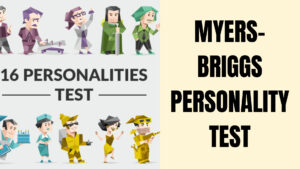
1. What type of person are you? It’s a good question, and one that has many possible answers. Detailed, standardized personality tests have been around for more than a century.
2. And although they might not explain everything that makes you “you,” they are popular among managers and those interested in self-reflection. Of the many tests available, the most commonly used is the Myers-Briggs Type Indicator, or MBTI.
3. It was devised by Katharine Briggs and her daughter Isabel Myers starting in the first half of the 20th century. Their ideas were based on the work of Swiss psychiatrist Carl Jung and his theory of psychological types.

Had you heard of the Myers-Briggs Type Indicator before reading the article? Have you taken the test before?
4. The MBTI gives 16 possible results based on a questionnaire that judges participants on four different scales.
5. (1)It looks at the way people react to those around them — are they introverted or extroverted?
(2)It examines the way people take in information, whether more through their direct senses — what they can see, touch and experience — or more through intuition.
6. (3)It asks how people make decisions — by thinking things through with logic, or by following their feelings.
(4)And it looks at how people like to arrange their lives, either having lots of structure — called “judging” by the test — or being more flexible.


(1)Would you say you’re more of an introvert or extrovert?
(2)Do you find it easy to make decisions? How would you describe your decision-making process?
8. That’s I for introvert, S for sensing, T for thinking and J for judging. According to the Myers-Briggs website, this type of person is quiet, serious and responsible, and they value traditions and loyalty. There’s no good or bad result — and studies have found that more than half of people get a different result if they take the test a second time.



